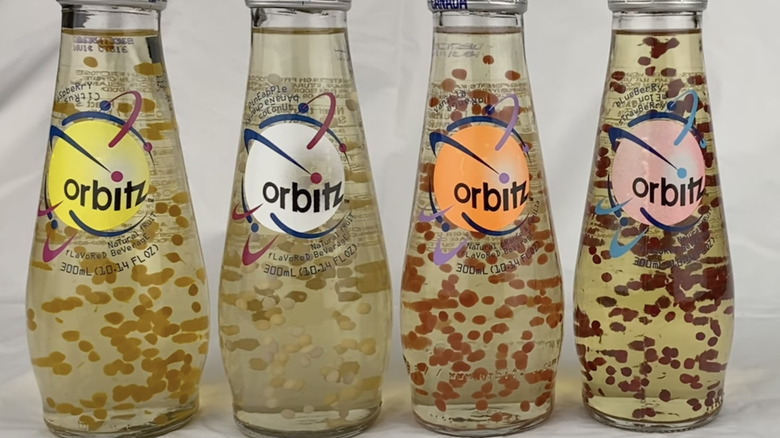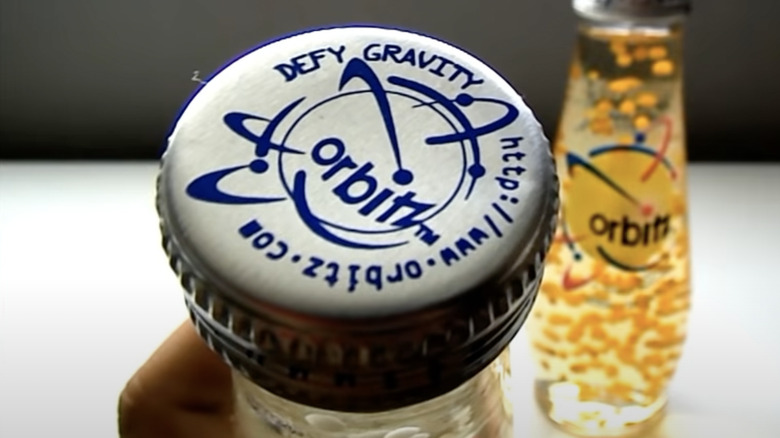What Were The Floating Balls In '90s Soda Orbitz Made From
Have you ever had the burning desire to drink a lava lamp? In the late '90s, The Clearly Canadian Beverage Corporation made a bet that this was a secret hankering that all soda drinkers had. And with that wild hypothesis, the soda drink nobody on the planet asked for, refreshing and chewy Orbitz, was born.
Launched in 1996, Fast Company reports that the Orbitz soft drink was advertised as a "texturally enhanced alternative beverage." True to its word, the soft drink contained magical little flavor balls that were chewy and gravity-defying. No matter how hard you shook your bottle of Orbitz, those bouncy and edible orbs remained stubbornly suspended.
The Orbitz soda not only ignored the rules of gravity, but it also seemed to eschew the rules of good taste. Fast Company describes reviews of the product as less than glowing. With a taste compared to cough syrup, Pine-Sol, and "old water from a flower vase," the actual flavors Orbitz was going for can be considered convoluted at best. Pineapple Banana Cherry Coconut? It confuses the brain and the tongue.
Still, the visual appeal of the drink captured the imagination and curiosity of the masses. The company behind Orbitz offered a pat explanation for the beads' mysterious suspension: there is an equal amount of density between the spheres and the liquid (via Science Journal). But that raises another question. What were those free-floating balls made of?
The secret science behind the Orbitz balls
It's still a bit murky, but the gummy balls were made of a blend of food dye, artificial flavoring, and gelatin. Time described the beads as "colored balls of gelatin," while the original Wall Street Journal article about the new drink referred to them as "flavored gel spheres." Gelatin is a firming agent that helps set up your jiggly jello and stabilize your delicate mousse, so it makes sense that the chewy beads needed gelatin for their bouncy ball texture. This still doesn't explain how these gel orbs remained firmly fixed in their liquid.
According to Science Journal, the secret lies within the liquid, not the balls. Xanthan and gellan gums, two ingredients listed on the back of the defunct Orbitz bottle, work as a supportive network for the gelatin. Both have long molecules that form weak bonds with one another, creating a web-like net that keeps the orbs frozen in place.
Despite packing a scientific marvel, Orbitz was discontinued shortly after its meteoric rise. To be fair, the '90s soda market was a psychedelic space, and few of the harebrained ideas survived to the millennia (R.I.P. Surge and Jolt). Still, Orbitz has had a recent nostalgic resurgence with certain fans. News-Press reported that Clearly Canadian still receives requests to bring the drink back. Until those petitions gain traction, curious foodies will have to resort to buying one of the overpriced and disgustingly antique Orbitz bottles being sold on eBay.

